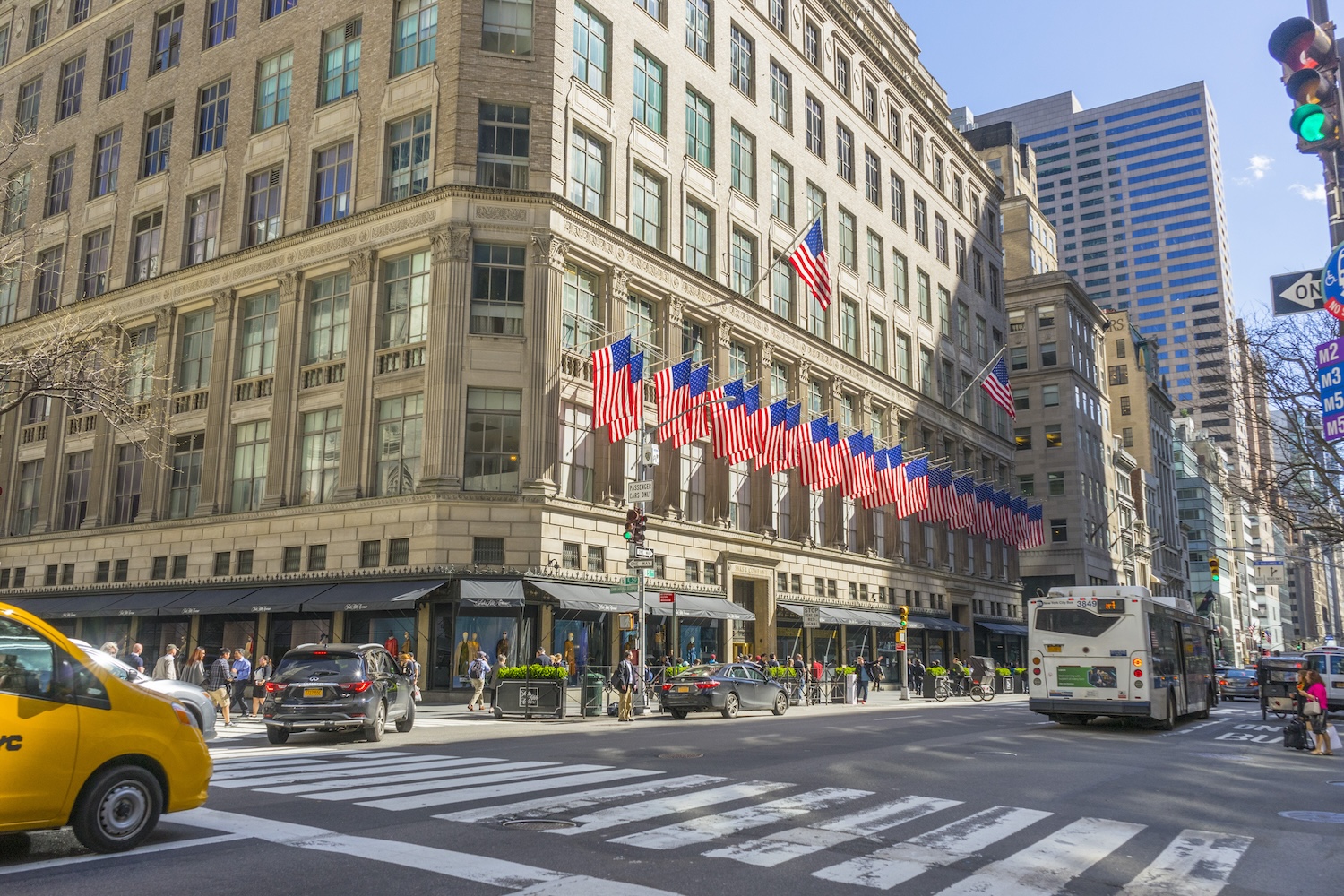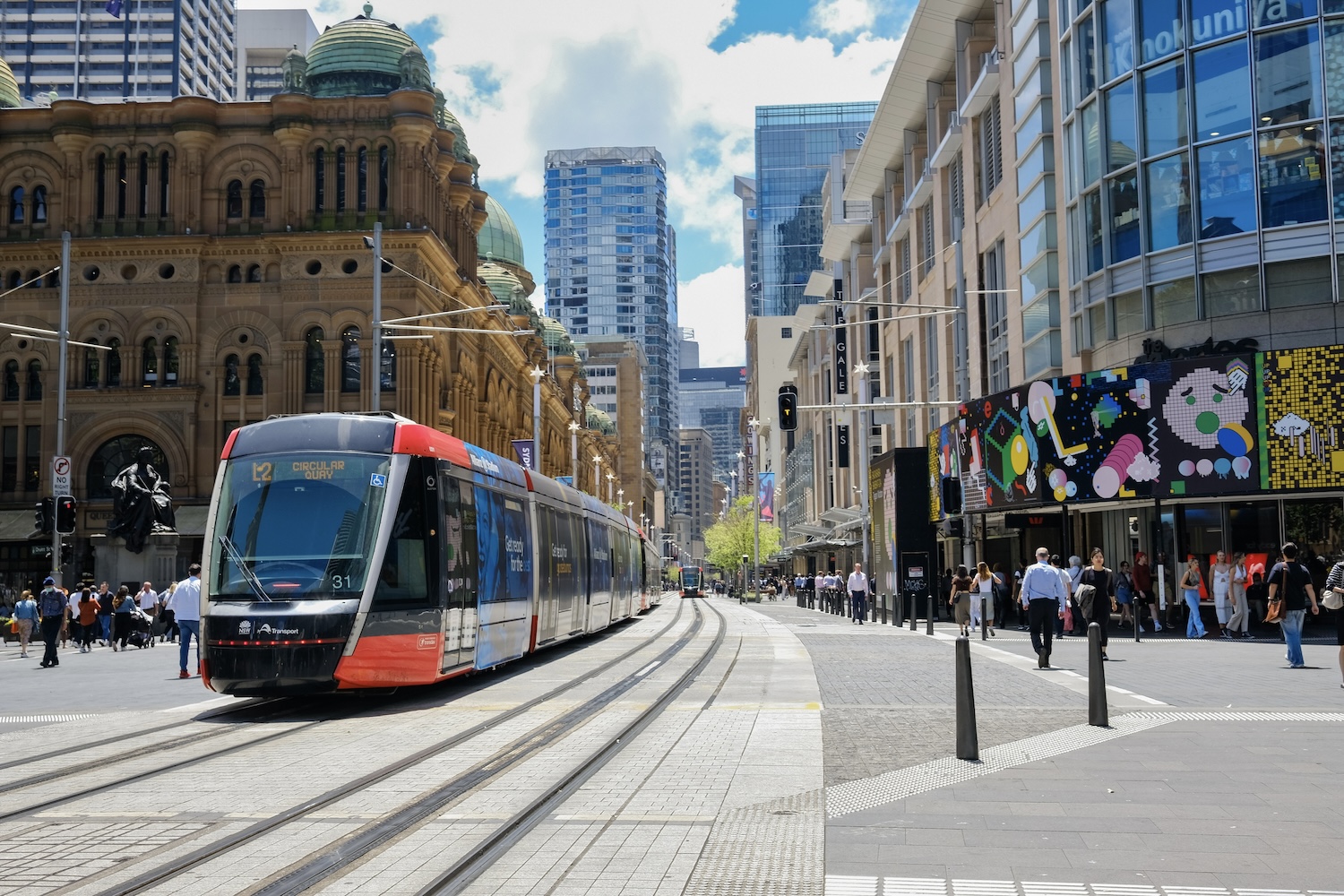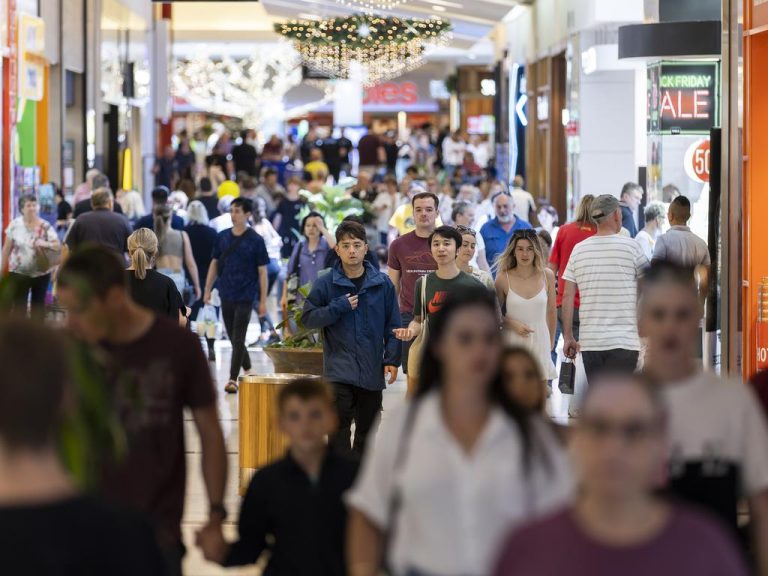Sydney’s Pitt Street ranked among world’s most expensive shopping strips

One of Sydney’s most renowned retail strips has earned a place in the top 10 rankings of the world’s most expensive shopping destinations, according to findings from a new global commercial real estate report.
Pitt Street, in Sydney, was the only Australian retail strip to feature in the top 10 of Cushman & Wakefield’s flagship Main Streets across the World report, which analysed the most expensive shopping streets globally based on headline rents.

Pitt Street, Sydney, home to brands such as Ralph Lauren and the city’s flagship Westfield shopping centre, has ranked among the top 10 most expensive retail destinations in the world. Picture: Getty
With an eighth spot ranking, Pitt Street was amongst other popular strips including first place, Via Montenapoleone in Milan, Upper 5th Avenue between 49th and 60th Streets in New York (second place), and New Bond Street in London (third place).
The report revealed rents rose in 79 of the 138 locations tracked, declining in just 19, with a global average rental increase of 4.4%.
Milan’s Via Montenapoleone — where rents increased by nearly a third in the past two years — surpassed New York’s Upper 5th Avenue to be crowned the world’s most expensive retail destination, the report found.

Via Montenapoleone in Milan, Italy is the world’s most expensive shopping strip, based on headline rents for retailers. Picture: Getty
This marked the first time a European street topped the global rankings in Cushman & Wakefield’s flagship retail report, which centred on headline rents in 138 best-in-class urban retail locations across the globe, of which were linked to the luxury sector.
Based on the firm’s proprietary data, the global index ranked the most expensive destination in each market.
| Global Ranking 2024 | Location | Rent (USD/sq.ft/yr) | YoY change |
| 1 | Via Montenapoleone, Milan | $2,047 | 11% |
| 2 | Upper 5th Avenue (49th to 60th Sts), New York | $2,000 | 0% |
| 3 | New Bond Street, London | $1,762 | 13% |
| 4 | Tsim Sha Tsui (main street shops), Hong Kong | $1,607 | 7% |
| 5 | Avenue des Champs Élysées, Paris | $1,282 | 10% |
| 6 | Ginza, Tokyo | $1,186 | 25% |
| 7 | Bahnhofstrasse, Zurich | $981 | 1% |
| 8 | Pitt Street Mall, Sydney | $802 | 0% |
| 9 | Myeongdong, Seoul | $688 | 3% |
| 10 | Kohlmarkt, Vienna | $553 | 5% |
Source: Cushman & Wakefield Main Streets Across the World report
Sydney’s Pitt Street in the CBD, features hundreds of retailers across two blocks including TAG Heuer, Ralph Lauren, to name a few, as well as Westfield Sydney, which is home to Tommy Hilfiger, Christian Louboutin, Gucci and Prada.
Report author and Cushman & Wakefield head of international research Dr Dominic Brown said as prime retail space becomes increasingly scarce, retailers have been seeking high-profile locations beyond traditional main streets.

New York’s Upper 5th Avenue, home to the famed department store Saks Fifth Avenue, is the second-most expensive retail strip in the world. Picture: Getty
“In Sydney, we’re seeing elevated demand for sections of Castlereagh and George Streets, particularly around iconic intersections like King and Pitt Streets, which offer unparalleled visibility and foot traffic,” he said.
“We’re witnessing a remarkable diversification of retailers on main streets, with brands like IKEA making bold moves into high-profile locations such as Oxford Street and Upper 5th Avenue.
“This trend is mirrored on Pitt Street, where we see a mix of fashion, sports, and general goods retailers thriving, while King Street continues to solidify its position as a hub for luxury brands.”

London’s New Bond Street took out third place in the list of the world’s most expensive shopping strips.
Colliers head of retail leasing Michael Tuck said the short supply of prime retail space in Sydney has seen premium and luxury flagship brands secure long-term leases and begin renewal discussions early.
“Over the past lease cycle we have seen King and Market Streets absorbed into the prime core with redevelopments attracting new flagships circling Pitt Street Mall,” he said.
“The retail mix of Sydney CBD continues to attract all on-trend international brands
“Sydney’s CBD remains a high profile and lucrative retail shopping destination for the full spectrum of retailing.
“Brands spend big on their high street flagship fit outs in the CBD and this investment creates a high-end shopping experience for shoppers.”

Demand is growing for prime retail premises in the Sydney CBD. Picture: Getty
CBRE retail investor leasing senior manager Damian Frazzica said e-commerce brands were also increasingly seeking physical store locations and prime high street spaces in Sydney as a strategic move to complement their online presence and enhance the overall customer experience.
“This shift reflects a growing recognition of the value that brick-and-mortar stores offer in terms of brand visibility, customer engagement, and the ability to provide a more tactile and immersive shopping experience,” he said.
“Leading examples of such brands expanding into physical retail include STAX, DISSH, Mejuri, July, LKSD, and Stylerunner, all of which are leveraging physical locations to strengthen their brand identities and connect more directly with their customers.”
Mr Brown said Longines’ decision to open in Westfield in Sydney’s CBD highlighted the strategic use of available space and the alignment with their brand positioning.
“Meanwhile, Chanel’s commitment to a new space underscores the continued confidence of luxury retailers in Australia’s premium retail precincts.”
Looking ahead: Retail outlook predictions for 2025
Continued enquiry and demand from domestic and international brands for new prime premises is stimulating a positive retail landscape in Sydney CBD and across Australia more broadly, says Mr Tuck.
“Spend is stable and city foot traffic continues to increase, especially with the introduction of the brand-new Sydney Metro network providing quick access to the core,” he said.
Meanwhile, CBRE Australian research director Kate Bailey said rents were expected to increase across the retail sector in 2025 off the back of rising consumer confidence and historic low supply levels.
“Australia has seen significant population growth, which is expected to continue in the near term,” she said.
“Our analysis shows that for every one million people, 800,000sqm of retail space is required to support this demand.
“That means population growth in Sydney will generate demand for an additional 400,000sqm of retail space between 2021 and 2031.”

Increased tourism and a return to office working is underpinning retail demand in Sydney. Picture: Getty
Additionally, the return of workers to the office post-pandemic, coupled with a rise in tourism numbers, was supporting CBD rental growth and driving vacancies lower, she said.
“Retail is expected to perform best in prime locations as retailers are investing considerable capital into creating flagship stores.
“However, we expect secondary assets to remain sluggish with retailers closing underperforming stores in secondary locations.”
Mr Brown said tourism has continued to drive a significant share of luxury retail sales, with 40-50% of luxury goods being purchased while travelling.
“Over 630,000 international visitors arrived in Australia in the 12 months to September 2024, a number just shy of pre-pandemic levels in 2019,” he said.
“As tourism numbers continue to recover, this should further boost performance of Australia’s super prime retail destinations.”







